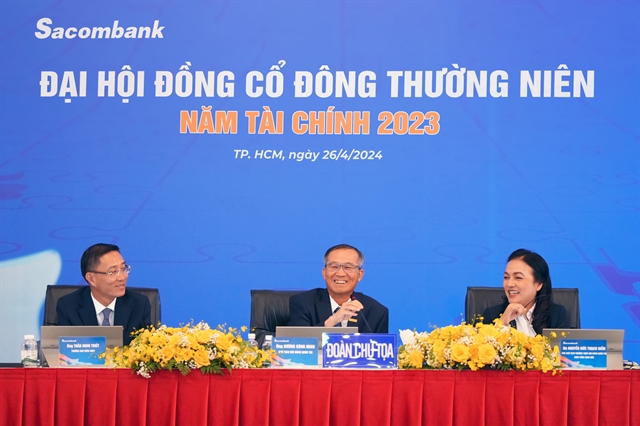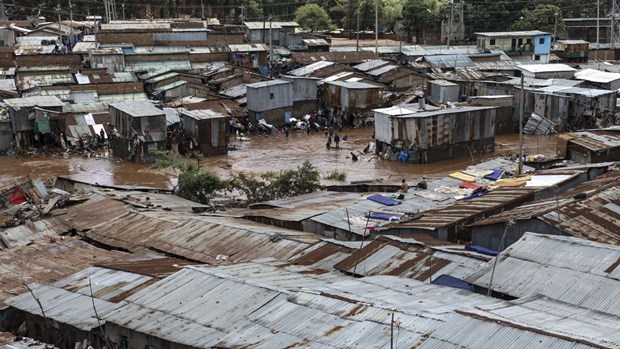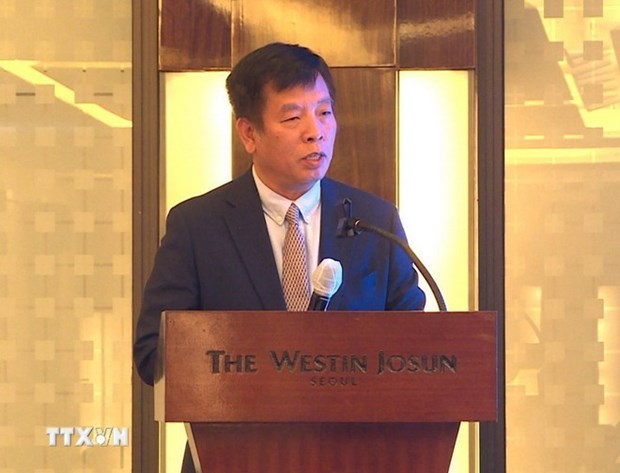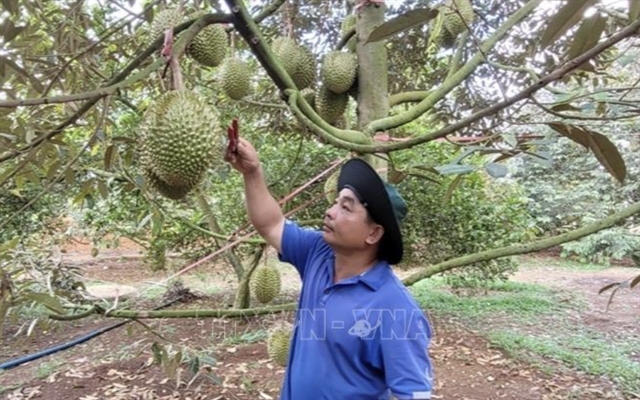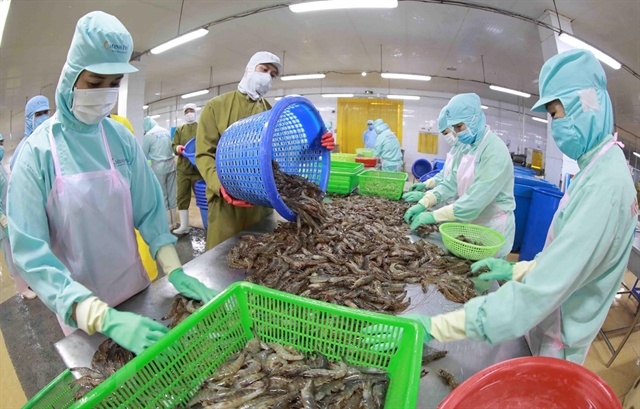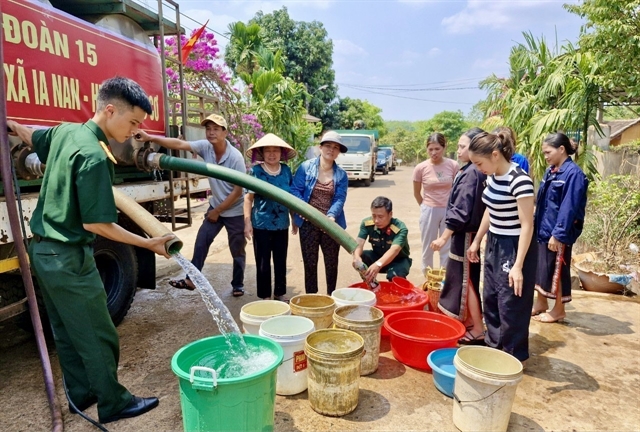 Environment
Environment

Hà Nội authorities have agreed for the construction department to pilot a project to recycle construction waste when the treatment of solid waste remains a challenge for the capital city during its rapid urbanisation process.
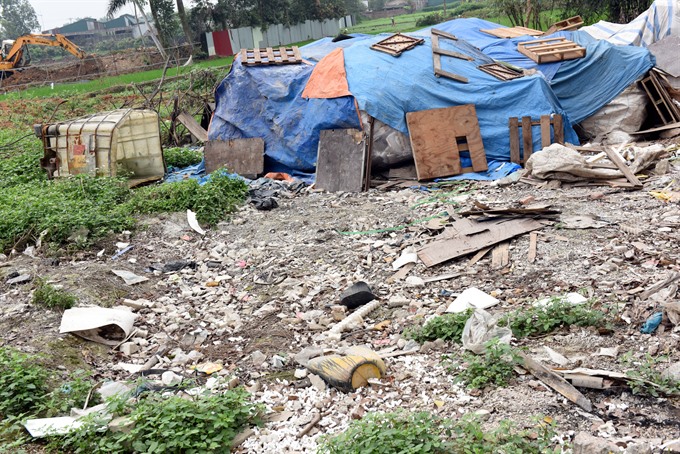 |
| Construction waste illegally discharged on the banks of a pond in Vĩnh Ngọc Commune, Đông Anh District, Hà Nội. The capital city will soon implement a recycling project in which construction waste like broken bricks, cement, mortar and bitumen will be crushed and used to replace black sand or macadam for lightweight constructions like pavements. — VNA/VNS Photo Nguyễn Văn Cảnh |
HÀ NỘI — Hà Nội authorities have approved a construction waste recycling project that can replace some of the materials used in building pavements and rural roads.
The project, proposed by the municipal Construction Department, will use advanced equipment that will remove the need for burying the waste, which is an environmentally-unfriendly solution.
Besides, landfills in the capital city are already overloaded with the large volume of solid waste generated each day.
The Hà Nội Solid Waste Treatment and Environmental Development Joint Stock Company will pilot the project in five districts: Hoàng Mai; Cầu Giấy; Bắc Từ Liêm; Thanh Trì and Đông Anh.
The project will crush construction waste with machines imported from Germany and Austria.
Company director Đặng Tiến Thành said this project will ensure that construction waste like broken bricks, cement, mortar and bitumen will be crushed, not buried.
The treated waste can replace construction materials such as black sand or macadam used in construction projects that do not require heavy load, such as pavements.
It can also be used to make by-products such as baking-free bricks or concrete for building rural roads.
The advanced technology will help to save land use and construction costs for new waste treatment facilities, he said.
The company applied the recycling construction waste technology for the first time in April at the construction site of the third ring road section from Mai Dịch to Nam Thăng Long.
However, Thành said there were still several difficulties in applying new technologies. He said there was insufficient legal foundation for organisations and individuals to carry out solid waste treatment projects.
Việt Nam also lacked technical standards for using by-products of treated waste, he said.
Thành also noted that regulations on construction waste treatment did not cover the responsibilities of investors in treating such waste. As a result, the illegal practice of dumping construction waste continued.
According to the municipal Construction Department, about 2,000 tonnes of solid waste are discharged by construction sites in Hà Nội each day.
Some of this waste is taken to four landfills in Đông Anh and Thường Tín districts. However, these landfills are already overloaded.
In 2011, the Hà Nội People’s Committee approved a project to set up 14 areas to collect and treat construction waste, but the lack of land has prevented its implementation to date.
Hà Nội needs about VNĐ11 trillion (US$488 million) to implement its solid waste treatment plan to 2030 (with a vision towards 2050). This figure includes VNĐ3.5 trillion ($155 million) from now until 2020.
The plan estimates that by 2030, more than 16,000 tonnes of solid waste discharged by households, industrial parks, construction sites and hospitals will have to be treated every day.
Seventeen solid waste treatment facilities, including eight existing ones, have been zoned off. The total area required for these facilities will be 422ha.
To carry out the project efficiently, the local administration has said that it will adopt policies and enhance communication campaigns to raise public awareness of environmental protection and initiate classification of solid waste by households.
New resolution
The Hà Nội Party Committee has promulgated a resolution on enhancing environmental protection until 2020 and beyond.
Under this, the capital city will focus on protection and sustainable use of water resources, effective management of discharges and cleaning up contaminated rivers and lakes.
By 2020, the city aims to complete treatment of waste from polluted lakes in the city and provide clean water to all rural residents. Waste treatment systems will be installed in all industrial parks and clusters, hospitals, medical centres and craft villages.
Meanwhile, the city has requested all construction sites to take measures to reduce dust and air pollution.
Mineral processing facilities have also been told to implement solutions to protect the environment, including the application of modern technologies to reduce emissions.
The city aims to increase recycling and reduce the burial of waste.
Relevant agencies have been tasked with preparing a master plan to deal with water pollution in rivers.
Aiming to effect fundamental changes in environmental protection in the next three years, Hà Nội has ordered departments and sectors at all levels to step-up co-ordination in reducing pollution.
Apart from raising public awareness, the city will focus on refining policies and laws on environmental protection. It will also promulgate technical requirements on environmental protection in high-risk fields, urban areas with high population density and sensitive ecological regions.
Regulations on environmental protection will be revised towards preventing investment projects that use backward technology and production models with a high risk of pollution. Competent agencies will step up inspections to detect and tackle any violations of environmental regulations.
The city will also establish a centre for environment data management this year to examine waste discharge. It will also move facilities causing serious environmental pollution away from residential areas. — VNS

